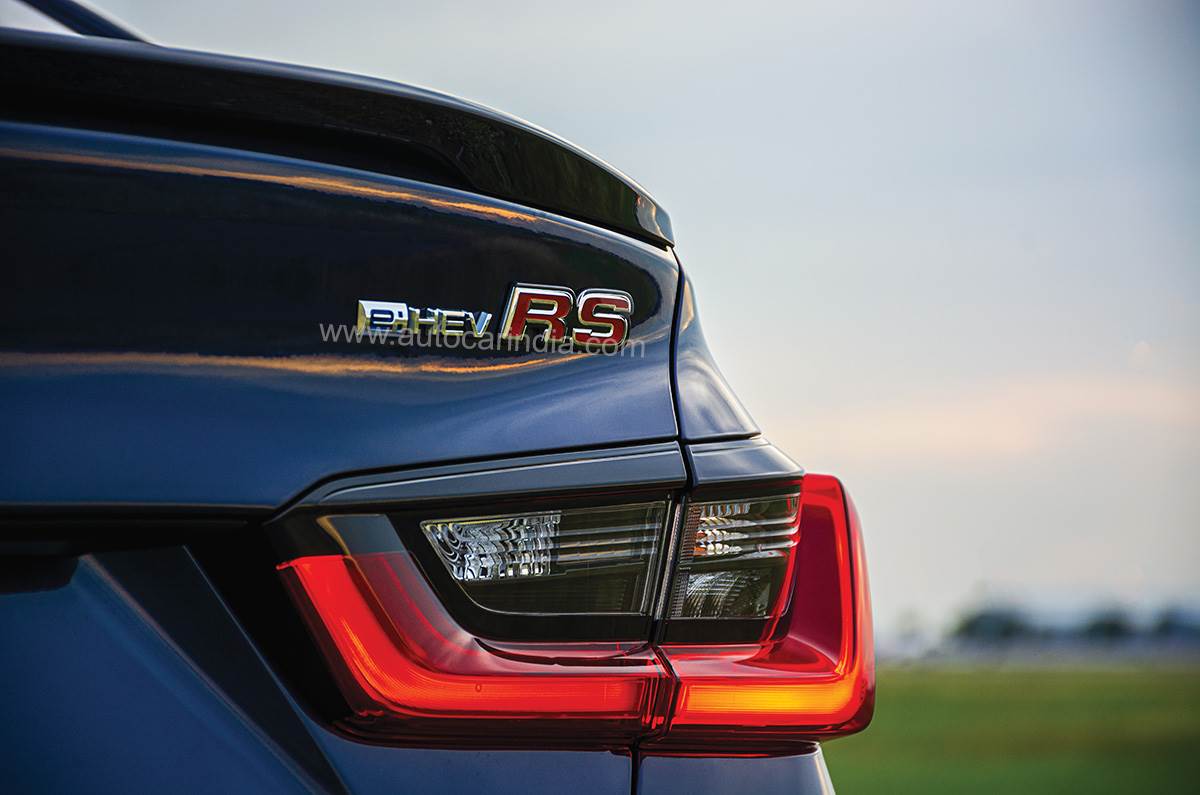The term Hybrid is something of a bad word in India. Long abused by the incessant use of low-spec components and ineffective systems, all of which failed to deliver anything like the fuel economy expected of a hybrid, the term ‘hybrid’ today holds little or no water in India.
This, however, is the real deal, the real McCoy. Say hello to the Honda City Hybrid, a car that’s so well stocked with cutting edge systems, it has technology falling out of its ears. Consisting of a full-on hybrid system that uses two large electric ‘motors’ and a voluminous battery pack in the trunk, it is a car that is between 35 or 40 percent more efficient than a regular petrol car. The City Hybrid, in fact, is so efficient, it has the potential to match even the most efficient of compact hatchbacks. There’s even more tech; the City Hybrid also comes with Honda’s driver assistance systems (ADAS) known as Honda Sensing, and this will be on the car we get in India too.
So, how does this Hybrid version of the City differ from the regular one we’re so used to seeing back home? For one, this car here is available in the sportier RS trim. This means you get sportier bumpers, there’s a new lip spoiler at the rear, and on the inside, you get upgrades like a sportier leather-covered steering wheel, multi textured seats (done in ‘leather’ and ‘suede’) and neat red contrast stitching. While this is the Sport Hybrid or the iMMD system, the RS trim isn’t exactly a match for this car, which honestly is more about efficiency and less about performance. So Honda in India could make do with just a different grille and a more prominent e:HEV badge. So much for cosmetics.

It’s under the skin where the Hybrid differs hugely from the City as we know it. The powertrain is completely different. Consisting of a 1.5-litre petrol that puts out just 98hp and runs a more efficient ‘Atkinson cycle,’ the engine is also aided by an electric motor that puts out a really strong 109hp. This clearly is no mild hybrid. The maximum combined power of the engine and the e-motor aren’t disclosed, but Honda does specify a maximum combined torque at 253Nm; the engine making 127Nm and the electric motor 253Nm.
Also very interesting is the fact that there is no gearbox. It has no CVT, no planetary gearset and no set of gear wheel sets either; it just has a single direct gear for high speed driving. So how does the engine send or transmit power to the wheels? Well, for the most part it doesn’t. Power goes to the wheels via the electric motor. In fact, the engine is often going at one speed and the wheels another. Motive force, as on a range extender, comes via the battery in the rear. So often, the engine is only run to charge the battery. Like all hybrids and EVs, the City also saves energy while decelerating, winding back otherwise wasted energy to the battery via an electric generator
All told, the Honda City Hybrid is also around 110kg heavier than the regular City. To accommodate the largish battery in the boot, there’s no spare tyre on this car here, just a puncture repair kit. The car in India will come with a space saver spare, which will further reduce the already reduced boot capacity of the City Hybrid. While the regular City has 506 litres of space in the trunk, this Hybrid has 410 litres.





